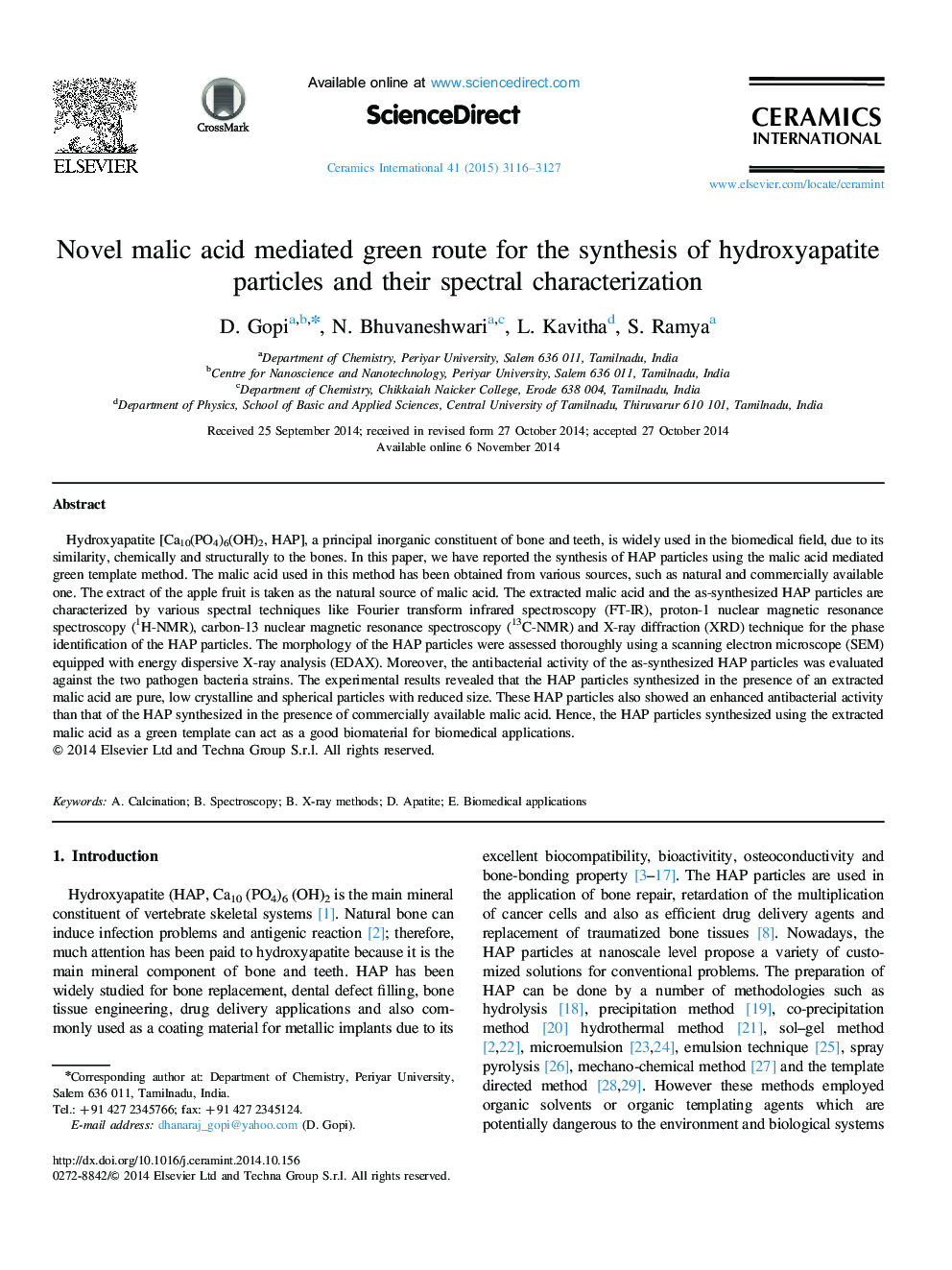| Article ID | Journal | Published Year | Pages | File Type |
|---|---|---|---|---|
| 1460637 | Ceramics International | 2015 | 12 Pages |
Hydroxyapatite [Ca10(PO4)6(OH)2, HAP], a principal inorganic constituent of bone and teeth, is widely used in the biomedical field, due to its similarity, chemically and structurally to the bones. In this paper, we have reported the synthesis of HAP particles using the malic acid mediated green template method. The malic acid used in this method has been obtained from various sources, such as natural and commercially available one. The extract of the apple fruit is taken as the natural source of malic acid. The extracted malic acid and the as-synthesized HAP particles are characterized by various spectral techniques like Fourier transform infrared spectroscopy (FT-IR), proton-1 nuclear magnetic resonance spectroscopy (1H-NMR), carbon-13 nuclear magnetic resonance spectroscopy (13C-NMR) and X-ray diffraction (XRD) technique for the phase identification of the HAP particles. The morphology of the HAP particles were assessed thoroughly using a scanning electron microscope (SEM) equipped with energy dispersive X-ray analysis (EDAX). Moreover, the antibacterial activity of the as-synthesized HAP particles was evaluated against the two pathogen bacteria strains. The experimental results revealed that the HAP particles synthesized in the presence of an extracted malic acid are pure, low crystalline and spherical particles with reduced size. These HAP particles also showed an enhanced antibacterial activity than that of the HAP synthesized in the presence of commercially available malic acid. Hence, the HAP particles synthesized using the extracted malic acid as a green template can act as a good biomaterial for biomedical applications.
